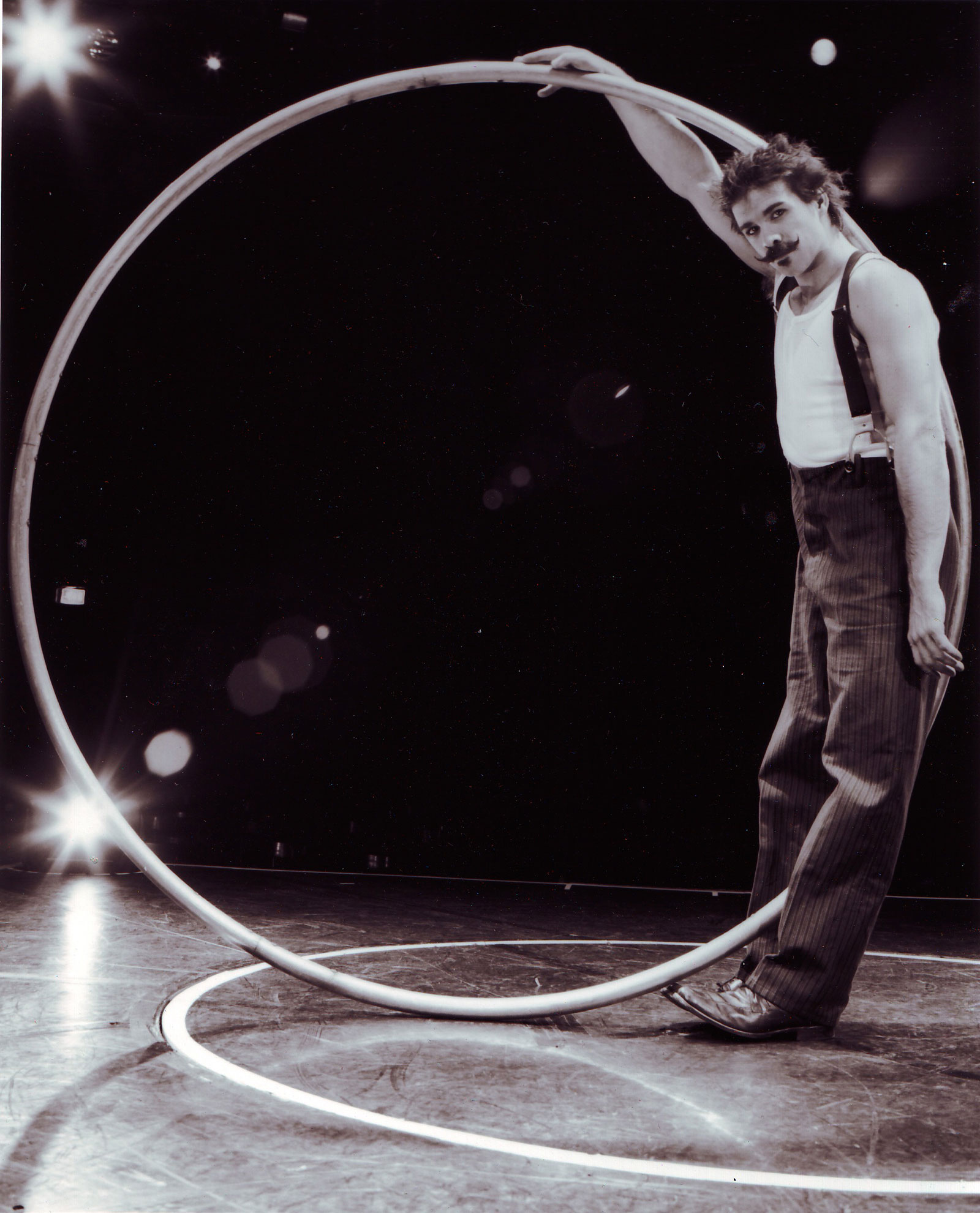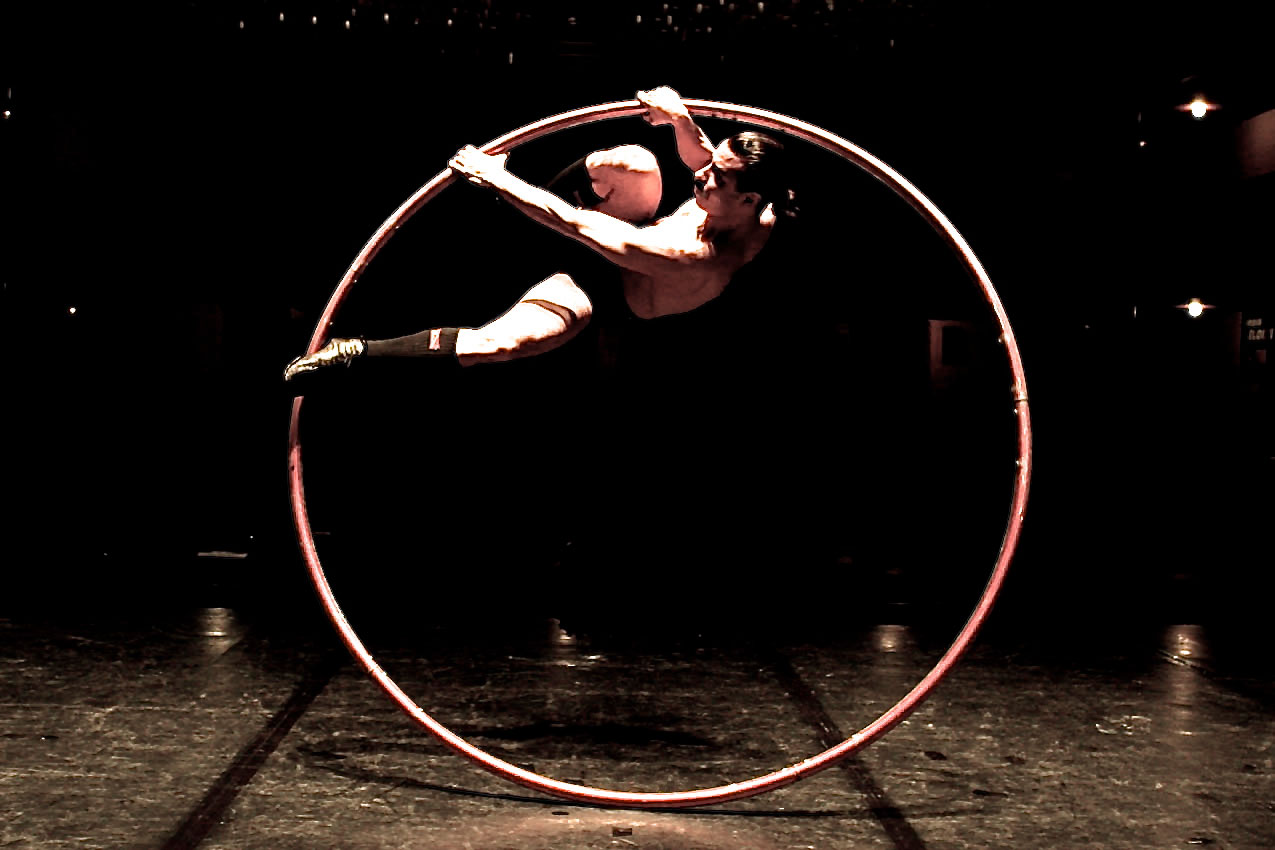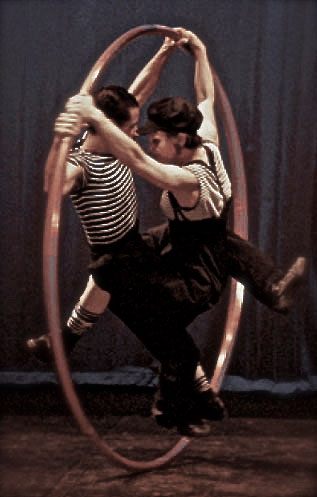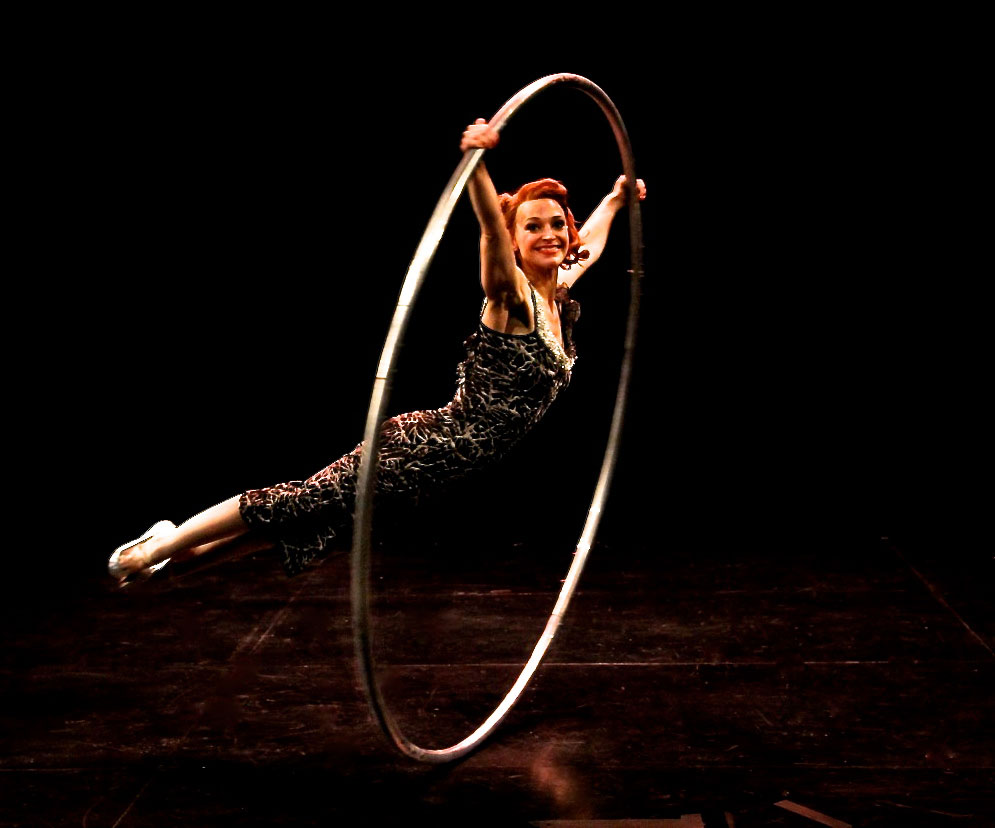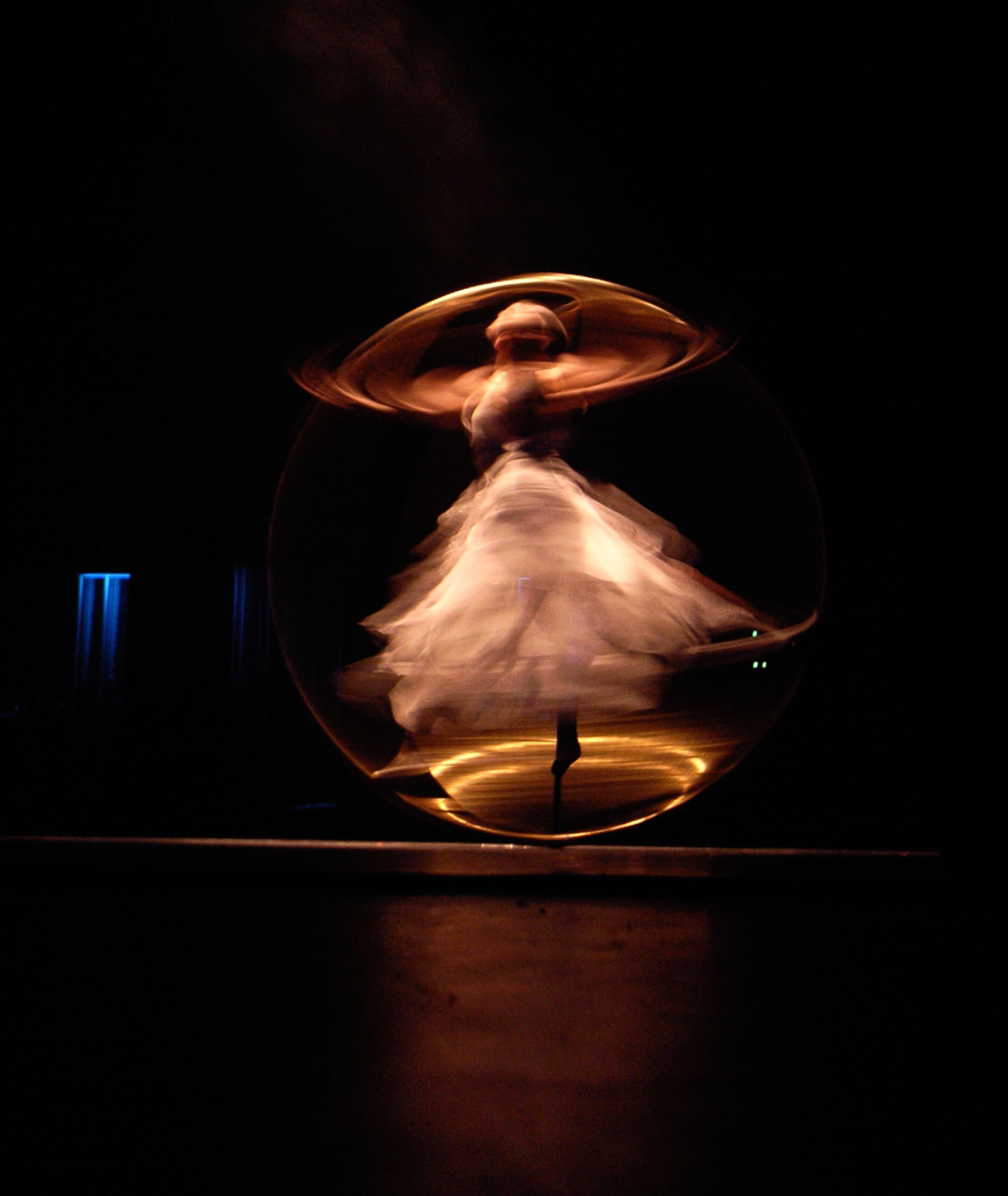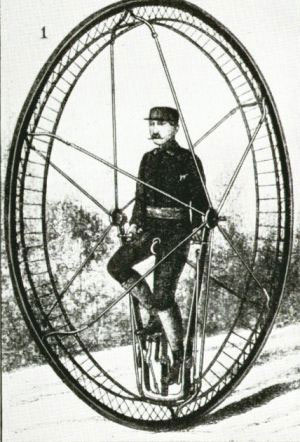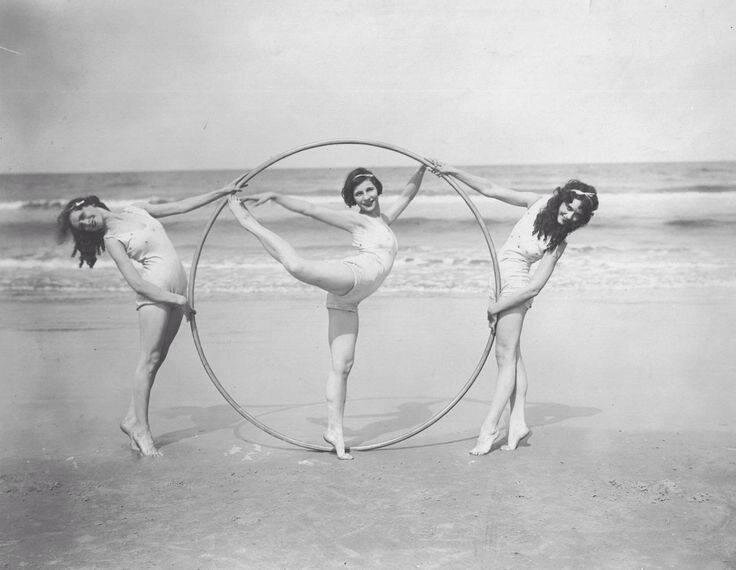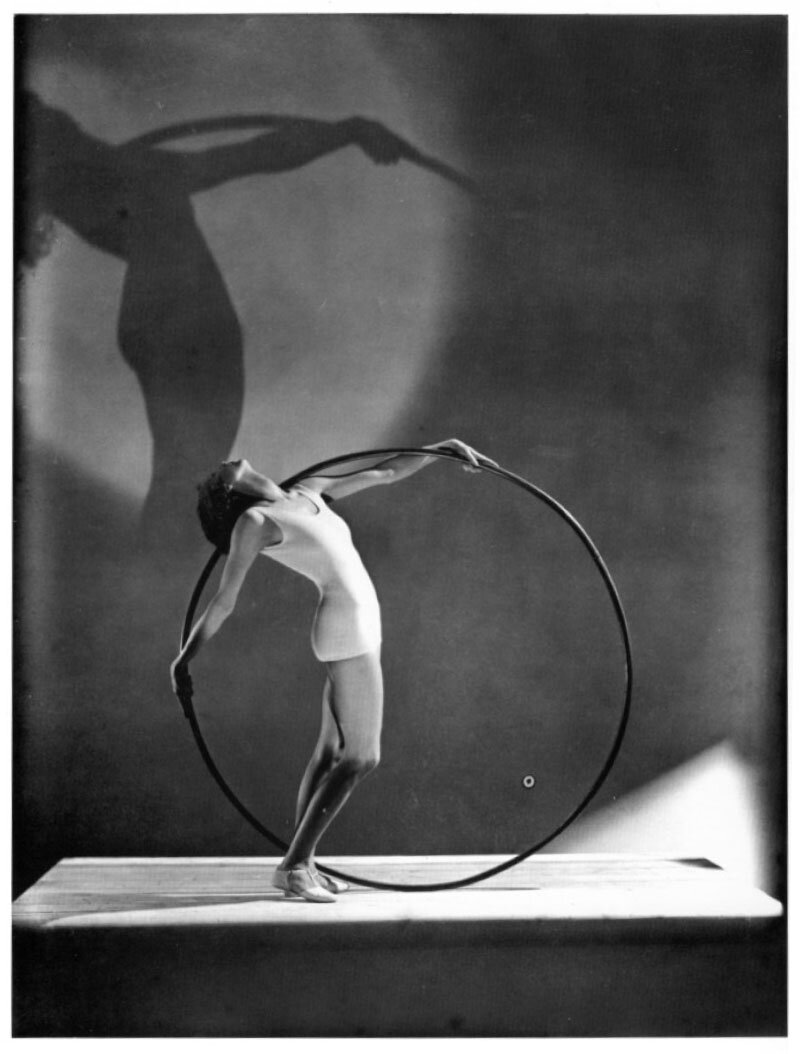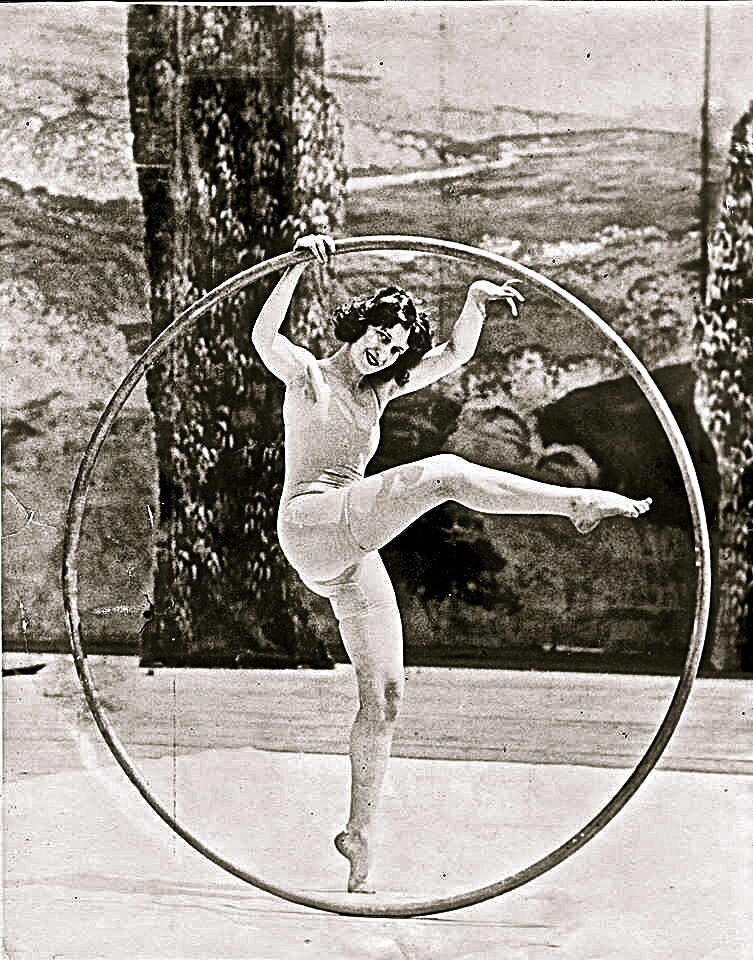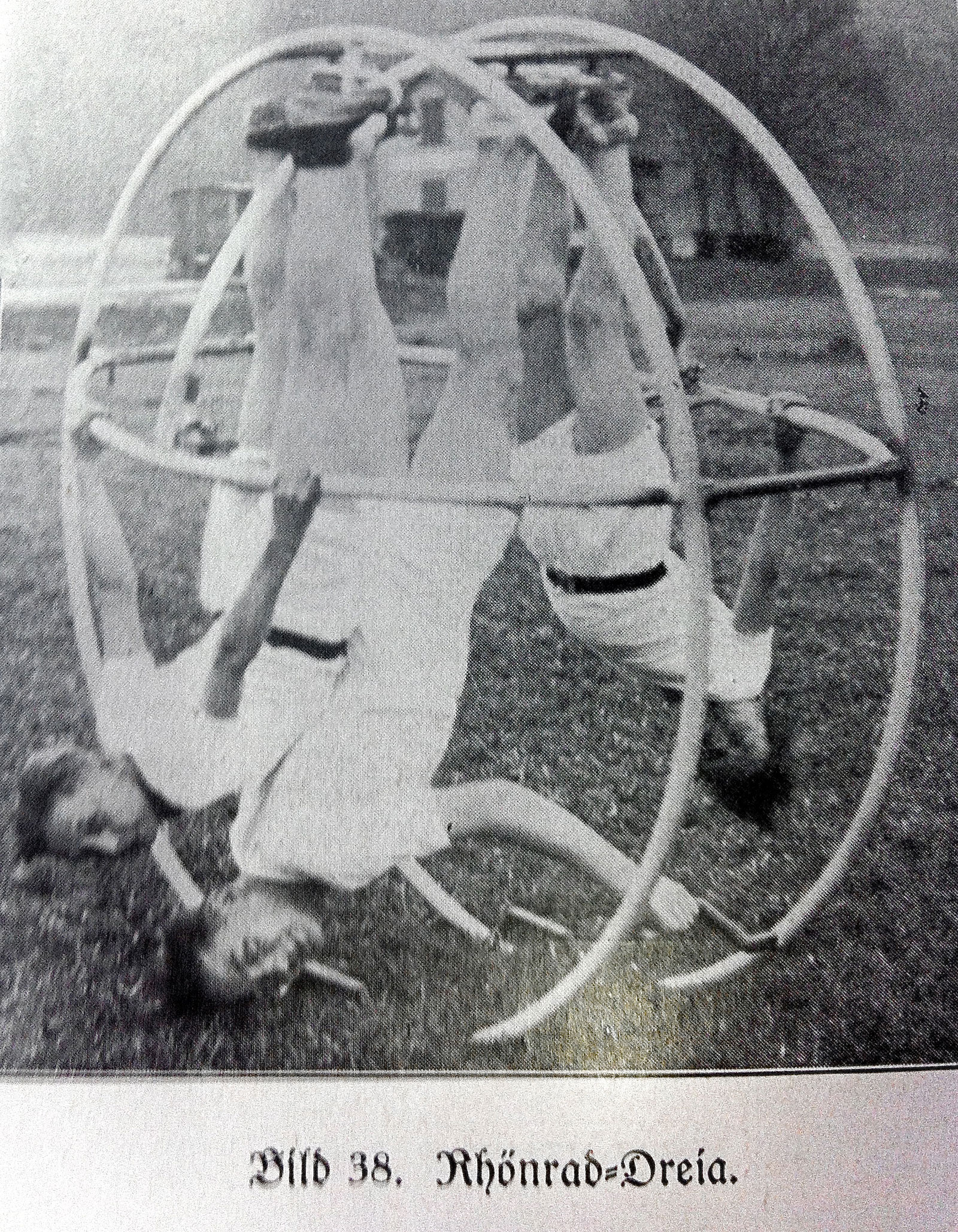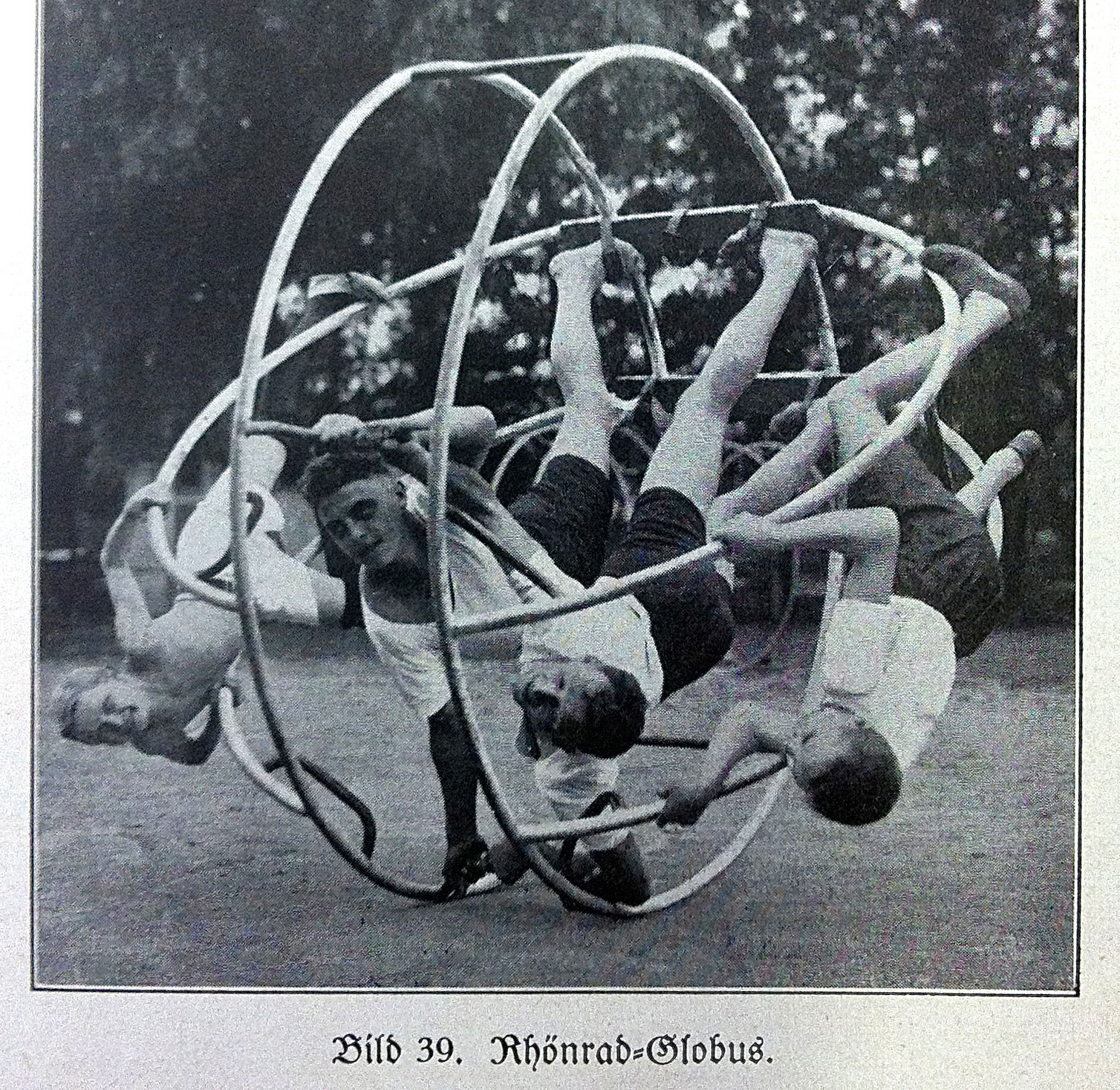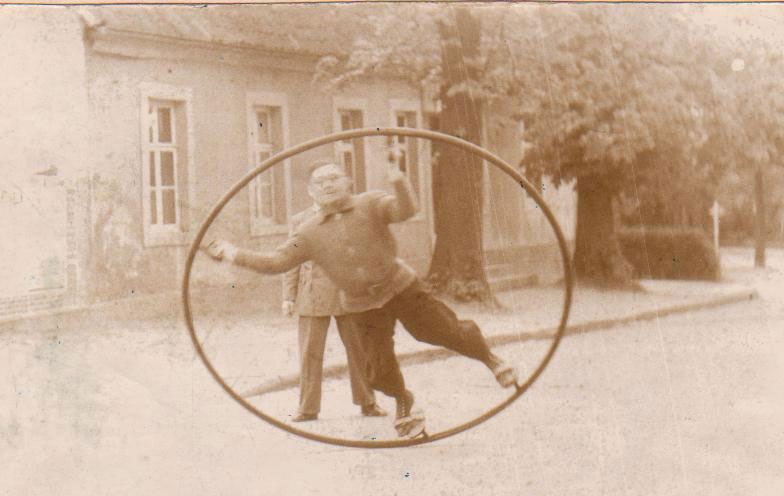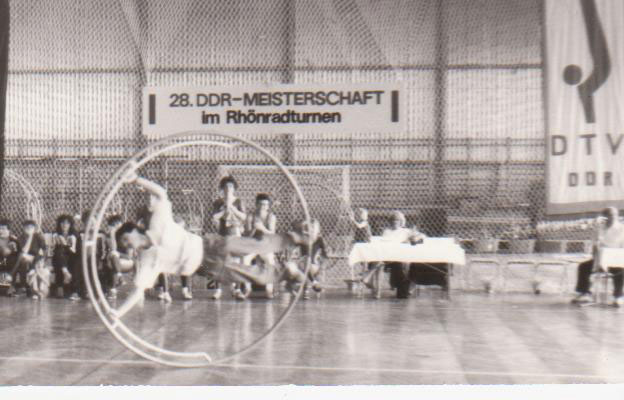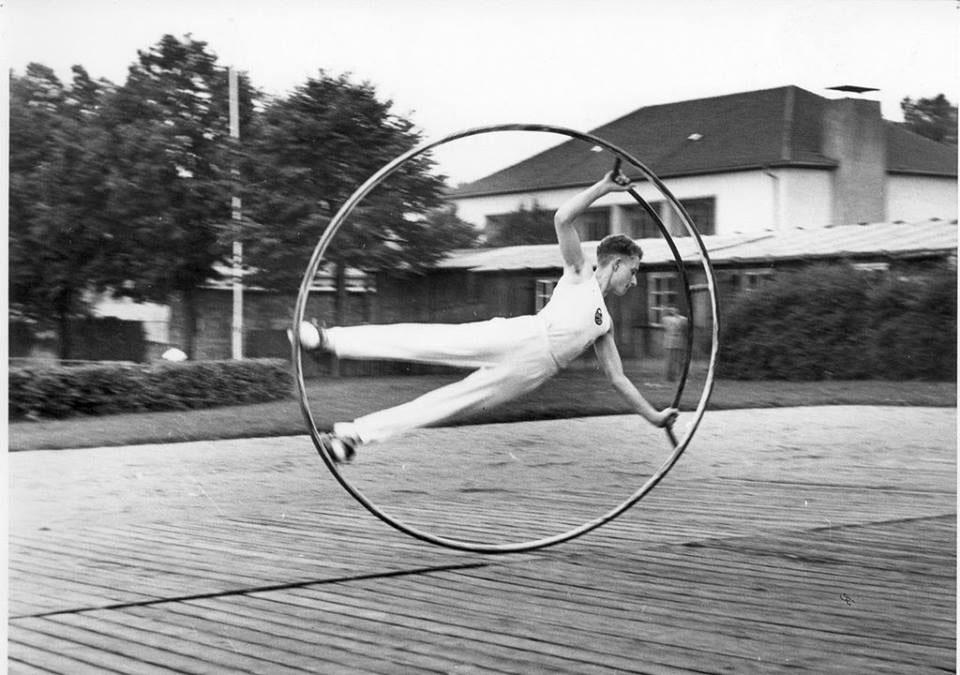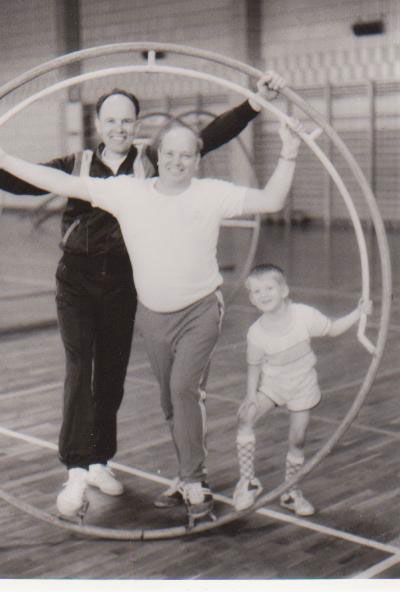
The Cyr Wheel
Invented at the end of the 20th century and named in 1998, the Cyr wheel is an artistic apparatus designed for circus performances. It is a single ring made of aluminium or steel sized approximately 10 cm taller than the user. The typical wheel movement is the “waltz,” a continuous spin or swirling pirouette, similar to that of a top or coin rotating around its axis. Daniel Cyr’s efforts and research work led to the design of the apparatus and the development of the technical vocabulary of the practice.
Born in Îles-de-la-Madeleine, Quebec, and a graduate of the National Circus School in Montreal, Daniel Cyr first made a name for himself as an acrobatic free-ladder specialist. In 1993, he co-founded Cirque Éloize and was the head of research and development for the company’s acrobatic devices and apparatus design. He built his first wheel in 1996. The idea came to him from a large hula hoop and an old, circular, wrought-iron coat rack. Made of a single piece of raw steel, the wheel was rough. He enhanced the design by adding a PVC coating and, as a result, improved the wheel’s adhesion to the floor. He then came up with a multi-part design that could be disassembled, which facilitated the application of coating. Daniel Cyr made his initial appearance with the apparatus in 1998 in the Cirque Éloize production of Excentricus, which is when the Cyr Wheel was officially named, and so began this apparatus’ worldwide journey.
The first stages of the journey
Daniel Cyr tutored a few lucky Cirque Éloize performers on the intricacies of the Cyr wheel, and their performances introduced North American, European and Asian audiences to this amazing new art form. First, Antoine Carabinier Lépine appeared in the 2002 production of Nomade. Then, Jonas Woolverton and Krin Haglund presented the first Cyr wheel duo in the 2003 production of Rain. In 2005, Eric Saintonge took over in Nomade. As Daniel Cyr’s early students, these four performers greatly contributed to the popularity of this new circus discipline.
In 2003, Daniel Cyr was invited to participate in the Festival Mondial du Cirque de Demain, where he won the silver medal. The achievement widened his wheel’s appeal throughout the circus community and brought it to Valérie Inertie’s attention, who then pursued Daniel Cyr’s tutoring. A pioneering female in the field, Valérie’s research in making her acts contributed to the artistic growth and development of a female Cyr wheel vocabulary. She was the first performer to present Cyr wheel acts outside of Cirque Éloize when performing at the 2005 Festival de Cirque des Iles-de-la-Madeleine in Daniel Cyr’s hometown. Valérie introduced this new device to German variety theatres and leading European circuses, such as the Festival International du Cirque de Monte-Carlo in Monaco, The Great Moscow State Circus in Russia, the Koninklijk Theater Carré in Amsterdam, the Cirque Knie in Switzerland and the Weltweihnachtscircus in Stuttgart, Germany. She has since performed Cyr wheel acts in more than 30 countries, serving as an ambassador for the art.
Cirque du Soleil called on Daniel Cyr to design a wheel act for the production of Corteo directed by Daniele Finzi Pasca. Corteo has been touring worldwide since 2005 and, as a result, Cyr wheel continues to grow in popularity. In 2006, Daniel Cyr was invited to take part in the opening ceremony of the Olympic Games in Torino, Italy. He has since been involved in other large-scale events and continues to perform his acts as a guest artist across the globe.
Gaining International Reputation
Cyr wheel’s notoriety continues to expand thanks to the many enthusiasts taking up the activity and the design companies making wheels readily available. Many circus schools now have wheels and provide training. ENC and ESAC are two institutions that have benefited from Daniel Cyr’s instruction. The internet has also helped to spread the practice and has greatly influenced the development of subsequent rotational circus apparatus. In 2004, the Stars of Beijing Circus artists used miniature wheels and rotated at high speeds. Quebec-based artists also explored this concept. The X wheel, the square wheel, the “charette,” the spiral and the circle cube are only a few of the many variants that have been designed to date. Since Daniel Cyr’s performance at the Festival de Cirque de Demain, wheel sports are also becoming increasingly popular. There are new trends in Rhönrad athletic training, and a new sport called Mono Wheel has been introduced. In only a few short years, the Cyr wheel has captured people’s interest globally, and it’s acclaim continues to grow.
Send us a message if you have new content to contribute regarding the history of similar devices: info@inertie.ca
History of Similar Devices

Motorwheel
(One-wheeled engine patented in 1869)
Several types of wheel devices were designed around 1869. The first motorised monowheel patent was registered in the USA by Bergner. Other inventors also took part in creating the apparatus, and the wheel was a hit in Rome in 1927 and in Paris in 1932. In the ‘30s, a rally was organised from Milan to Rome. Participants of the rally sought to determine whether the one-wheeled vehicle was safer than the two-wheeled vehicle, which was designed in a structure comparable to the one of the Rhönrad (see below). David Cislaghi won for producing the safest wheel.
Scherzo Waltz
(Choreographed by Doris Humphrey circa 1923)
In her day, Doris Humphrey was known as a ground-breaker in the modern dance community. Born and raised in Chicago, she enrolled in the Denishawn School in Los Angeles in 1917, where she was encouraged to choreograph various pieces including the Scherzo Waltz incorporating a large wheel. Interestingly, she developed her choreography using the weight transfer, balancing and fall-and-recovery techniques on which the present-day Cyr-wheel technique is based.
Rhönrad
(Sports apparatus patented in 1925 in Germany by Otto Feick)
Also known as the German wheel, the double-wheeled Rhönrad is like a human-sized hamster wheel. Otto Feick, son of a blacksmith and railroad worker from the Rhön region in Germany, drew inspiration from a childhood experience to invent the apparatus in which his grandfather had allowed him to roll down a hill in an iron-rimmed barrel of sorts. He started a metal works factory and built his wheels, securing a patent for his invention in 1925. He also developed three other types of wheels: the E-Rad with narrower double wheels, the Dreia designed for three people and the Globus for five people. However, the all-purpose Rhönrad wheel is the only one to have stood the test of time. In the following years, some 20,000 wheels were built! Demand was so great that Feick had to work with a subcontractor to manufacture them. In 1927, Dr. Willi Schütz wrote a detailed illustrated handbook on the use and vocabulary of the Rhönrad. Feick was invited to present his invention in London in 1927 and then in New York City two years later.
The Rhönrad became increasingly popular. In Würzburg, Alert Weimer set up an association of Rhönrad enthusiasts, establishing one of the leading training centres in Germany. Feick brought together members of the Railroad Sports Association (where he worked) and the Würzburg Sports Center to promote the new sport. The enthusiasts organised competitions and set up training centres in several German cities. Berlin became a leading centre for the sport.
The 10th anniversary of the apparatus’ invention with celebrations held at Berlin’s Wintergarten in 1935 proved to be a turning point in the development of the Rhönrad. The following year, some 120 experienced practitioners of the sport took part in a Rhönrad demonstration during the Berlin Olympic Games. At the time, the wheel was considered to be sports equipment for schools and occasionally served as an entertainment attraction. The new sport would also be taken up by the military, marines, police officers, firefighters and pilots for training purposes. Pilots were especially interested in training with this piece of equipment because it incorporated exercises useful in developing spatial orientation skills.
World War II put a temporary end to the growth of the sport, but, after the war, the old wheel enthusiasts came together again. The German Democratic Republic supported revitalisation efforts surrounding the Rhönrad in the hopes of prevailing over the West. The damaged wheels were repaired and training was resumed in Berlin and Würzburg. Competitions were organised and the Rhönrad was recognised by the national gymnastics federation, Deutscher Turner-Bund. The first championship took place in Hanover in 1960. Unfortunately, Feick died in 1959 and did not see his sport officially recognised.
The sport kept spreading abroad. Its popularity increased, especially with the participation of Rhönrad athletes at the Gymnaestrada festivals in Switzerland in 1982 and Denmark in 1987. In 1990, the first European Cup in wheel gymnastics was organised in Taunusstein, Germany, by the FIRR (International Rhönrad Federation), a predecessor of the IRV (International Wheel Sports Federation). Since then, a dozen meets have been held throughout the world. In 1996, the German wheel made a mark in the circus world as part of Cirque du Soleil’s production of Quidam and circus schools around the world began teaching it. In 2000, numerous wheel athletes and enthusiasts came together to celebrate the 75th anniversary of the invention and pay tribute to its inventor, Otto Feick.
Thank you to Dr. Jörd Winkler, a 13-time Rhönrad medalist in Germany and psychomobility therapist, trainer and collector, who has contributed significantly to documenting the history of the Rhönrad.
Einreifen
(Apparatus invented circa 1930 by Adalbert von Rekowski, Germany)
Developed by Rhönrad athletes, the Einrefen was a single steel wheel with hand- and foot-holds. Its movement vocabulary was similar to that of the Rhönrad: side roll, spiral and coin spin. Unlike today’s Cyr wheel, there was no waltz move. No patent was ever registered for the Einrefen, but the cover page of Die Woche im Bild newspaper in March 1951 attributes the invention of the apparatus to Rekowski. Although the sport did not spread as widely as the Rhönrad, several pictures bear witness to its invention in the last century. The first demonstration of the Einrefen took place during the Rhönrad championship in 1960 in Hanover. According to Dr. Jörg Winkler, the Einrefen was forgotten after the fall of the Berlin wall in 1989.
Conclusion
[New Text goes here]
We are always looking for additional information and visual material to enrich this page. Please contact us if you have some knowledge on the subject. We are especially interested in learning more about the hoop dance of Doris Humphrey.
Bibliography
« Das Rhönrad » Autor : Dr. Willi Schütz, Preussische Hochschule, Spandau, Berlin (1927)
« Das Neue Universum » Union Deutsche Verlagsgesellschaft, Stuttgart, Berlin, Leipzig (+-1930)
« Das Rhönrad dreht sich seit 75 Jahren » Autor: Manfred Zirkelbach, Universitätsbibliothek Marburg (2000)
« Rhönrad oder doch Pfalzrad? vor 90 Jahren erfand der Pfälzer Otto Feick 1890 – 1959 » Autor: Hässel Gerd (2010)
Rhönrad Archiv von Dr. Jörg Winkler
The History of the Wheel Gymnastics, IRV (2013)
Patente Archive Depatisnet Deutschland
Douglas Self’s Museum and Retro Technology
Spaarnestad Photo Archive


